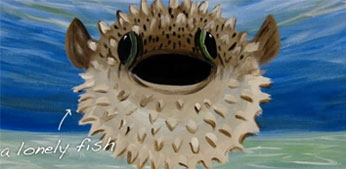The Art of Underpainting
A person’s taste in art can range from traditional to contemporary and everything in between. But there’s one thing we can all agree on: without it, our lives would be fairly drab. So on a recent family spring break trip to Charleston we took our two older children, Aidan (9) and Molly (7), to a local art studio for a group painting lesson.
The hour-long session’s mission: learn to paint a blowfish.
During the lesson, the instructor said something that caught my attention—especially as my two were adding crabs, divers, and what I believe is an undiscovered species of fish to their works of art. He said, “Don’t overpaint.” It struck me for several reasons. For one, a child is intrinsically unable to follow that statement—EVER. I think that’s what makes children the most creative among us, at least until we teach them to draw between the lines or to underpaint. Picasso once said that every child is an artist. The problem is how to remain an artist once they grow up. But for those of us in the creative or visual communications worlds, avoiding “overpainting” can be a really valuable lesson. For us, the most powerful ideas are always the most simple and to the point. Strip away everything that’s unnecessary and get down to the basic core idea or message and what you’ll be left with is something that grabs attention, communicates clearly, and most importantly, will be remembered. Everything else is just a deep-sea diver lost in the background.



